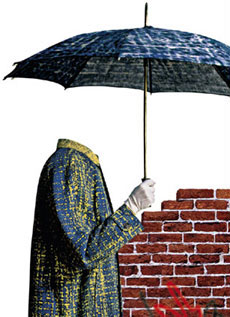|
Quidam (pronounced key-dahm) marks a turning point in Cirque du Soleil's
history. Unlike the troupe's previous shows, Quidam does not take spectators to an
imaginary realm of fanciful, larger-than-life characters. Rather, it is an examination
of our own world - inhabited by real people with real-life concerns. In the words of
its director, Franco Dragone: "We wanted this production to be more human. Like
preceding productions, Quidam conveys emotion, but it is more raw and intense, more
dramatic, and more personal too. Quidam highlights our frailties and our anguish in
the face of the new millennium that lies before us. It also underlines differences,
conveying positive feelings and resentment and confronting our dreams with our
nightmares."

Quidam emanated from a concern about growing alienation and loneliness in a
world that, ironically, is devising ever-more ingenious ways of keeping people
in touch with one another. The show depicts human suffering, but at the same time
celebrates life. Quidam is about rediscovery - about giving new meaning to the
mundane. As such it is more thoroughly scripted than Cirque's previous shows.
Quidam integrates performance and theatricality to a greater extent than ever
before, drawing on the emotional relationships between the performers within the
troupe. The color range is restrained, and the costumes have a carefully plucked
raffishness about them. The idea is to underline the anonymity of mass society —
"It could be anyone, anybody," the show's programme observes. "Someone coming, going,
living in our anonymous society. A member of the crowd, one of the silent majority.
One who cries out, sings and dreams within us all." — and to frame the circus
acts as momentary explosions of beauty that defy the lifelessness of a grey and
fraying world.
In this world, the one who cries out is Zoë, a
young girl who fumes because, as she is constantly ignored by her parents,
believes she's seen everything there is to see, experienced all there is to
experience. For her, the world has lost all meaning. Her anger, sharp and
unforgiving, shatters her reality and soon she finds herself in the universe of
Quidam. Here she is not alone; she is accompanied by the playful companion
(Karl/Fritz/Target) and a more enigmatic personage (John/Mark) who will
attempt to seduce her with the marvelous, the unsettling, and the terrifying.

|
|
| Premiere: | Apr.23.1996 (BigTop)
Dec.11.2010 (Arena) |
| Type: | Touring |
| Finale: | Nov.21.2010 (Bigtop)
Feb.26.2016 (Arena) |
|
| |
Creative Team
Guide
Guy Laliberté
Director
Franco Dragone
Creation
Gilles Ste-Croix
Choreographer
Debra Brown
Composer
Benoit Jutras
|
|
Set Designer
Michel Crête
Lighting Designer
Luc Lafortune
Sound Designer
François Bergeron
Costume Designer
Dominique Lemieux
Makeup Designer
Nathalie Gagné
|
| | |
Audio/Visual
|
| |
Interviews
MARK WARD
Dancer, Performer
"A Career Backwards"
Keith Johnson, 2011
BENOIT JUTRAS
Composer
"Making Time Stop"
Keith Johnson, 2011
OLIVER "BJ" GENTEN
Percussionist
"BJ, Live from Japan!"
"An Evenings Chat with BJ"
Ricky Russo, 2004
|
|

![]()




